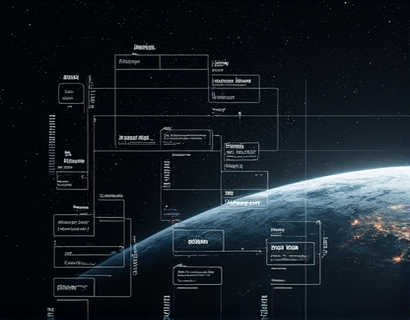Maximizing Leadership Efficiency: A Comprehensive Dashboard for Streamlined Team Management and Enhanced Productivity
In today's fast-paced business environment, effective leadership is crucial for driving success and maintaining a competitive edge. For business leaders and organizational managers, managing large and diverse teams can be a daunting task. The complexity of overseeing multiple departments, ensuring seamless communication, and making informed decisions can often lead to inefficiencies and bottlenecks. To address these challenges, a comprehensive dashboard has been developed, designed to streamline team management and enhance productivity across various industries. This advanced tool is not just a management solution but a strategic asset that empowers leaders to optimize their processes and achieve outstanding results.
The need for an efficient leadership dashboard stems from the growing complexity of modern organizations. With teams spread across different locations, time zones, and functional areas, traditional management methods often fall short. A comprehensive dashboard offers a centralized platform that integrates various aspects of team management, from project tracking and performance analytics to communication tools and resource allocation. By consolidating these functions into a single interface, leaders can gain a holistic view of their operations, identify potential issues early, and take proactive measures to ensure smooth execution.
Key Features of the Comprehensive Dashboard
The dashboard is equipped with a suite of features tailored to meet the diverse needs of business leaders. One of the core functionalities is real-time data visualization, which allows leaders to monitor key performance indicators (KPIs) at a glance. Customizable dashboards enable users to focus on the metrics that matter most to their specific goals, whether it's project completion rates, team engagement levels, or financial performance. This immediate access to actionable insights facilitates informed decision-making and helps leaders stay ahead of the curve.
Another critical feature is advanced project management capabilities. The dashboard provides tools for task assignment, progress tracking, and deadline management. Leaders can create and assign tasks to team members, set priorities, and monitor completion status all within the platform. This streamlines the workflow, reduces the need for constant email updates, and ensures that everyone is aligned and working towards common objectives. The ability to track progress in real-time also helps in identifying bottlenecks and reallocating resources as needed.
Enhancing Communication and Collaboration
Effective communication is the backbone of any successful organization. The comprehensive dashboard addresses this by integrating robust communication tools. Built-in chat and messaging features allow team members to collaborate seamlessly, regardless of their physical location. These tools support both synchronous and asynchronous communication, ensuring that team members can stay connected and share information efficiently. Additionally, the dashboard supports file sharing and document management, making it easy to access and collaborate on important files.
To foster a culture of transparency and inclusivity, the dashboard includes discussion forums and feedback mechanisms. Leaders can post updates, announcements, and seek input from team members, promoting a two-way communication flow. This not only keeps everyone informed but also encourages participation and engagement. By fostering an open environment, leaders can tap into the collective intelligence of their teams, leading to more innovative solutions and better outcomes.
Strategic Decision-Making and Reporting
One of the most significant advantages of the comprehensive dashboard is its role in enhancing strategic decision-making. The platform aggregates data from various sources, providing a unified view of organizational performance. Leaders can access detailed reports and analytics, which offer insights into trends, patterns, and areas for improvement. These insights are invaluable for making data-driven decisions that align with the organization's long-term goals.
The dashboard also supports scenario planning and predictive analytics, allowing leaders to forecast future outcomes based on current data. This forward-looking approach enables proactive planning and risk management. By simulating different scenarios, leaders can test the impact of various strategies and choose the most effective course of action. This level of foresight is crucial in today's unpredictable business landscape, where the ability to adapt quickly can mean the difference between success and failure.
Customization and Scalability
Recognizing that no two organizations are alike, the comprehensive dashboard is highly customizable to meet the unique needs of different industries and business models. Leaders can tailor the dashboard to reflect their specific workflows, integrate with existing systems, and incorporate industry-specific metrics. This flexibility ensures that the tool remains relevant and effective, regardless of the organizational context.
Scalability is another key aspect of the dashboard. As organizations grow and evolve, the dashboard can scale alongside them, accommodating increased complexity and expanding teams. Whether a small startup or a large enterprise, the platform provides the necessary support to manage growth efficiently. This scalability ensures that the dashboard remains a valuable asset throughout the organization's lifecycle.
User Experience and Accessibility
The user experience is a top priority in the design of the comprehensive dashboard. The interface is intuitive and user-friendly, minimizing the learning curve for new users. Drag-and-drop functionality allows leaders to customize their dashboards effortlessly, creating a personalized workspace that enhances productivity. The platform is also accessible on various devices, including desktops, tablets, and smartphones, ensuring that leaders can access critical information and tools anytime, anywhere.
Accessibility features are integrated to ensure that the dashboard is usable by everyone, regardless of physical abilities. This commitment to inclusivity ensures that all team members can fully participate and contribute to the organization's success. By prioritizing user experience and accessibility, the dashboard not only improves efficiency but also promotes a more inclusive workplace.
Security and Compliance
In an era where data security is paramount, the comprehensive dashboard adheres to the highest standards of security and compliance. Robust encryption protocols protect sensitive information, ensuring that data remains confidential and secure. The platform complies with industry regulations such as GDPR, HIPAA, and others, providing peace of mind for leaders who handle regulated data. Regular security audits and updates ensure that the platform remains resilient against emerging threats.
Transparency in data management is also a key focus. Leaders have control over who can access specific data and can set permissions based on roles and responsibilities. This granular control helps prevent unauthorized access and ensures that sensitive information is handled appropriately. By maintaining strict security and compliance standards, the dashboard builds trust and confidence among users.
Case Studies and Success Stories
The effectiveness of the comprehensive dashboard is evident in the success stories of organizations that have implemented it. A leading technology firm, for instance, saw a 30% increase in project completion rates after adopting the dashboard. The real-time visibility into project status and team performance allowed the leadership to identify and address issues promptly, leading to more efficient workflows and higher quality outcomes.
In the healthcare sector, a major hospital network reported significant improvements in operational efficiency and patient care. The dashboard's integration with existing systems enabled seamless data flow, reducing administrative burdens and allowing medical staff to focus more on patient treatment. The enhanced communication tools also facilitated better coordination among departments, resulting in a more cohesive and responsive healthcare environment.
These case studies demonstrate the versatility and impact of the comprehensive dashboard across different industries. By streamlining management processes and enhancing collaboration, the dashboard helps organizations achieve their goals more effectively and drive sustained growth.
Conclusion
In conclusion, the comprehensive dashboard represents a significant leap forward in leadership efficiency and team management. By providing a centralized platform for data visualization, project management, communication, and strategic decision-making, it empowers business leaders to optimize their processes and maximize productivity. Whether in the tech industry, healthcare, finance, or any other sector, the dashboard offers a scalable and customizable solution that adapts to the unique needs of each organization.
As businesses continue to evolve and face new challenges, the ability to manage teams effectively and make informed decisions becomes increasingly critical. The comprehensive dashboard is not just a tool but a strategic partner that helps leaders navigate the complexities of modern management. By embracing this advanced solution, organizations can unlock their full potential, drive innovation, and achieve lasting success.










































